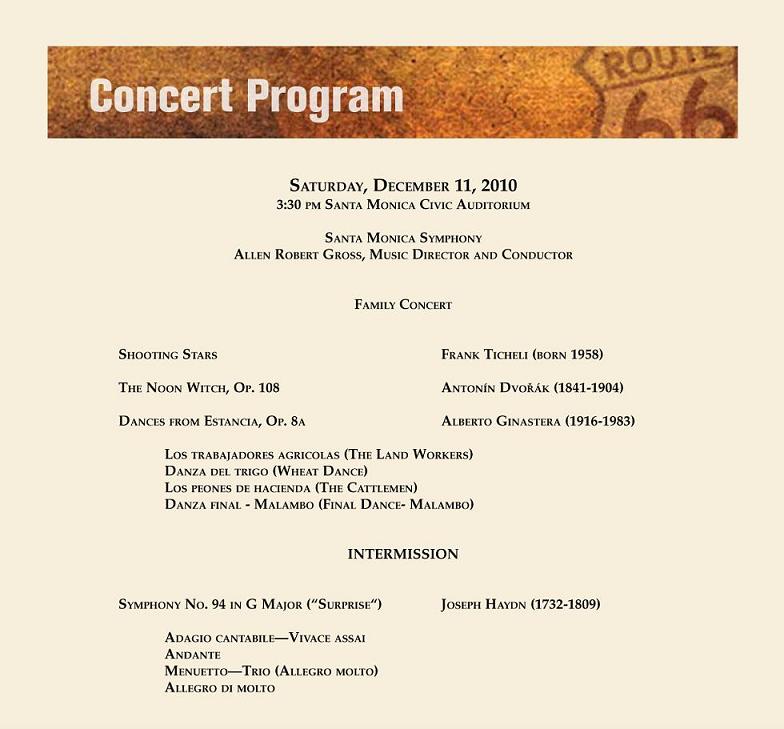
His rebuttal of Fay is to be found in Shostakovichiana website.īoris Schwartz, Music and Musical Life in Soviet Russia 1917-1970, 1953: The classic overview of the period. This book relies heavily on Volkov and tends to verge on hagiography. Ian MacDonald, The New Shostakovich, 1990, provides an excellent synoptic Chronology of Shostakovich’s life and the Soviet context (278-315). I will refer to other sources during the course of the walk-through with this caveat in mind. It is also necessary, at the outset, to acknowledge Fay’s assertion that “Unfortunately, there is not a single even remotely reliable source in Russian, English, or any other language for the basic facts about Shostakovich’s life and work.” (Shostakovich, 3). Volkov in “Volkov’s Testimony Reconsidered”, A Shostakovich casebook, edited by M.H.Brown, 2004, but this remains open to fierce debate (see Shostakovichiana website).
#Program notes shostakovich symphony 6 update
A Life Remembered, 1994, revised 2006.įay edited a further update in Shostakovich and His World, 2004.įay has also largely discredited S. This is best supplemented by Elizabeth Wilson, Shostakovich. I have used her chapters in following the Life and Music of Shostakovich, below. The most recent and reliable biography is Laurel E.

It is always Shostakovich and us” (Defining Russia Musically, 476). And no other body of texts so fully convinces us that the meaning of an artwork, indeed of any communication, is never wholly stable but is the product of history, a history that only begins with its creation (Otherwise, one could maintain, our national anthem is not a patriotic song but only a drinking song)…It is never just Shostakovich. No other body of texts so compellingly demonstrates that meaning is never wholly immanent but arises out of a process of interaction between subject and object, so that interpretation is never wholly subjective or wholly objective to the exclusion of the other. No other music – indeed, I would not hesitate to say – so radically forces engagement with the most fundamental issues of interpretation. Under the Soviet dispensation, of course, the Party claimed exclusive interpretative rights….But that hopelessness of final arbitration is precisely what has given the music its enormous social value, its terrific emotional force, and its staying power. “The fact is, no one owns the meaning of this music, which has always supported (nay invited nay compelled) multiple opportunistic and contradictory readings, and no one can ever own it. I also preface this walk-through with the words of Taruskin: Shostakovich has, in my opinion, emerged from Russian twentieth-century culture as a towering figure of his age” (Shostakovich, xvi). I also echo Wilson: “ My great hope is to have succeeded in constructing a convincing and lifelike portrait of Shostakovich, whereby he is seen as a person of overwhelming humanity and integrity, whose art has illuminated our lives….any human weaknesses he displayed are far outweighed by the steadfast courage he found in order to live by his convictions. It was an extraordinary period in Soviet history but, with hindsight, was a period doomed to profound tragedy, the extent of which can barely be fathomed. I have spent a disproportionate amount of time on Shostakovich’s life prior to 1936 because I knew so little about his youthful music. There is much available on-line, especially the website Shostakovichiana which should be visited.

The debates in academic circles over Shostakovich’s motives as he lived through the Stalin era can become tortuous and belligerent. For this walk-through of Shostakovich’s music and life, I will follow the chapter headings of Fay.

In this latter regard, the two principal biographical sources used are Laurel Fay and Elizabeth Wilson (see Sources below). I thus will focus on the music first, and then the context. Today, there is a need to listen to his music without preconceptions, although this can be difficult because he was so deeply immersed in the realities of his time and place in the Soviet Union. His career offered a paradigm for the evils or – depending upon one’s perception – the benefits of totalitarian control over the arts” (Fay, 1). He was larger than life, a cultural icon, a legend. He “spent most of his life in the public eye. Shostakovich was a Russian composer who lived through the Soviet era.


 0 kommentar(er)
0 kommentar(er)
